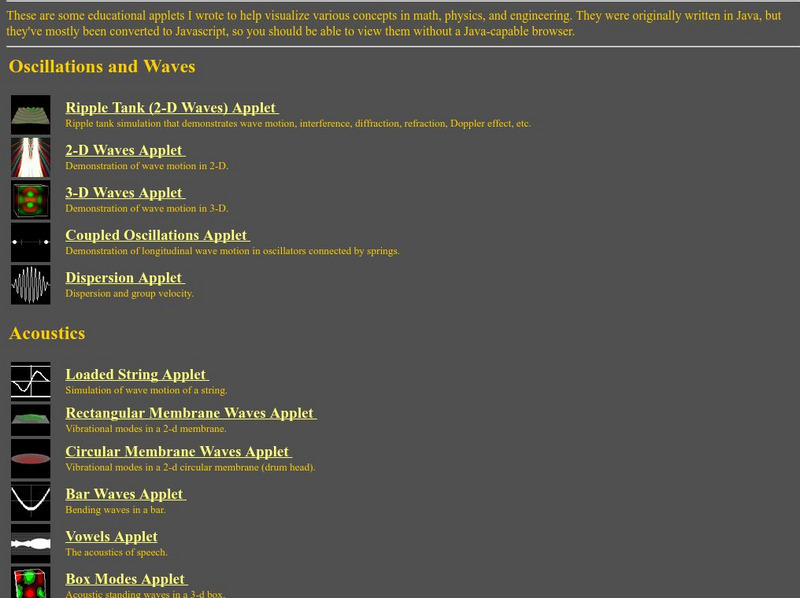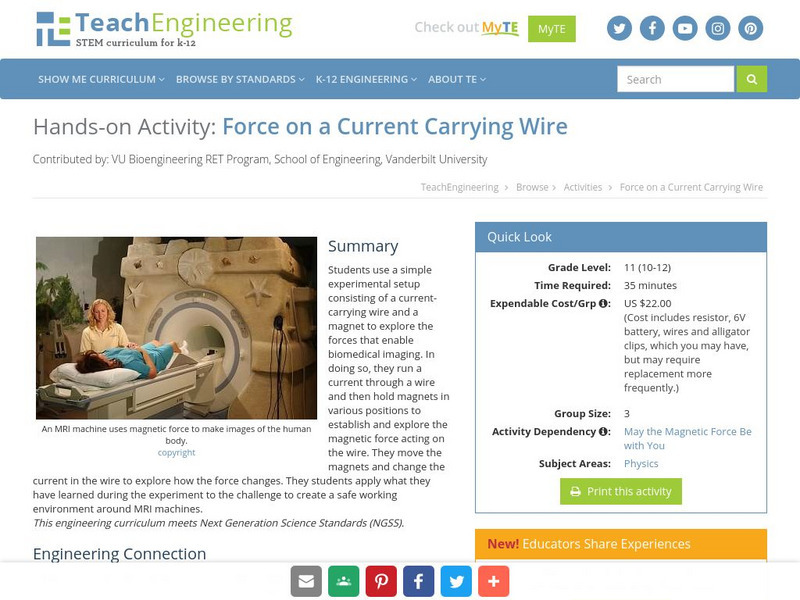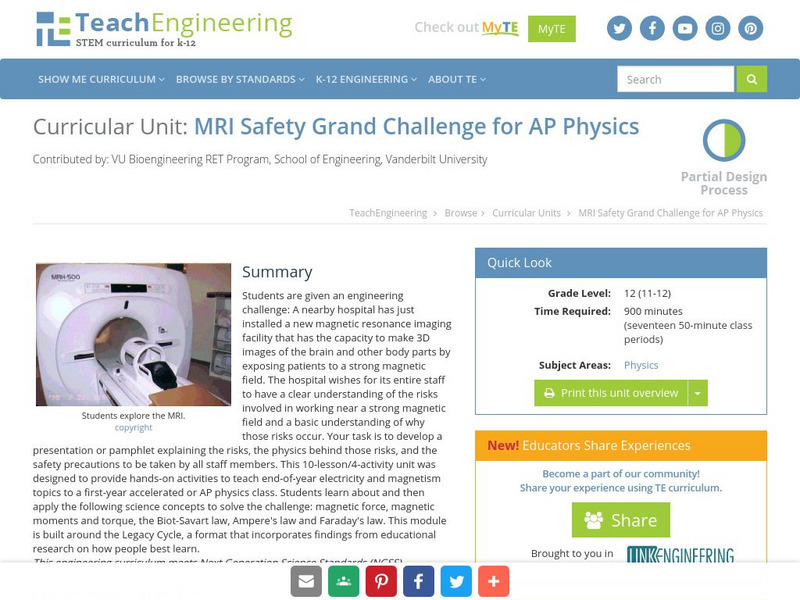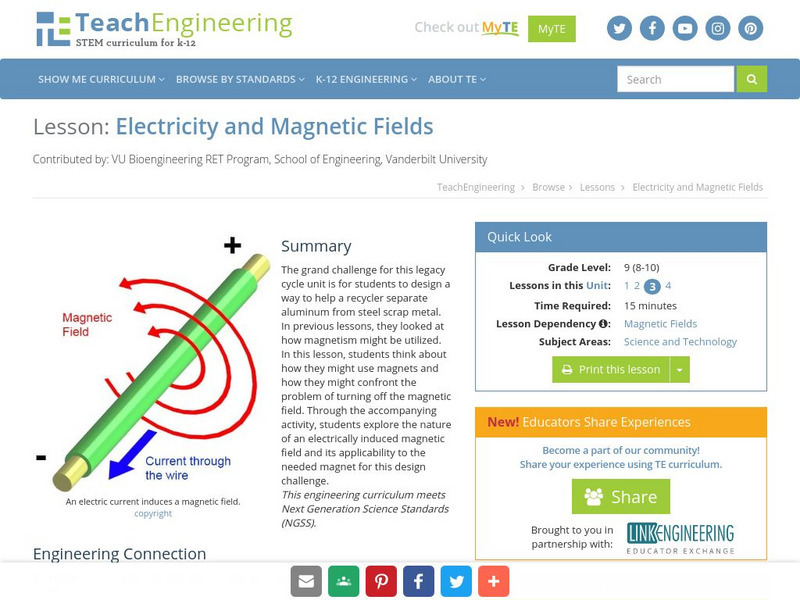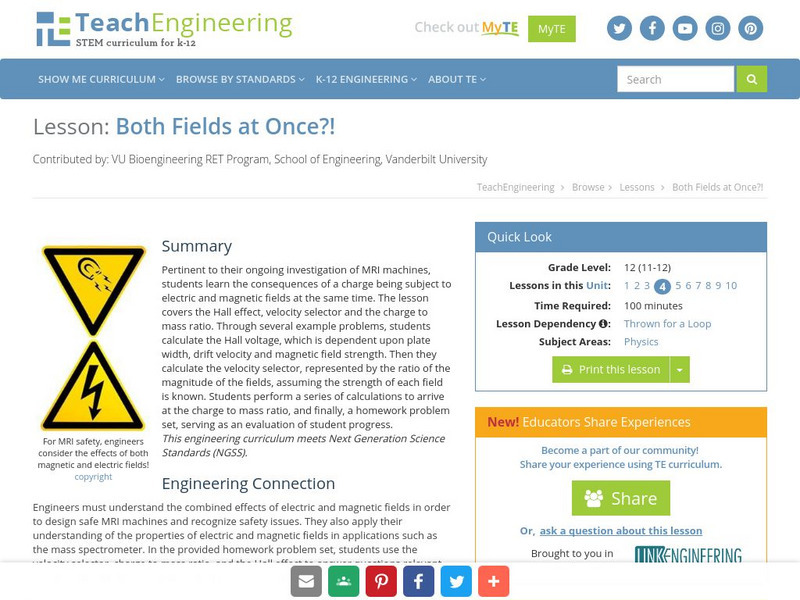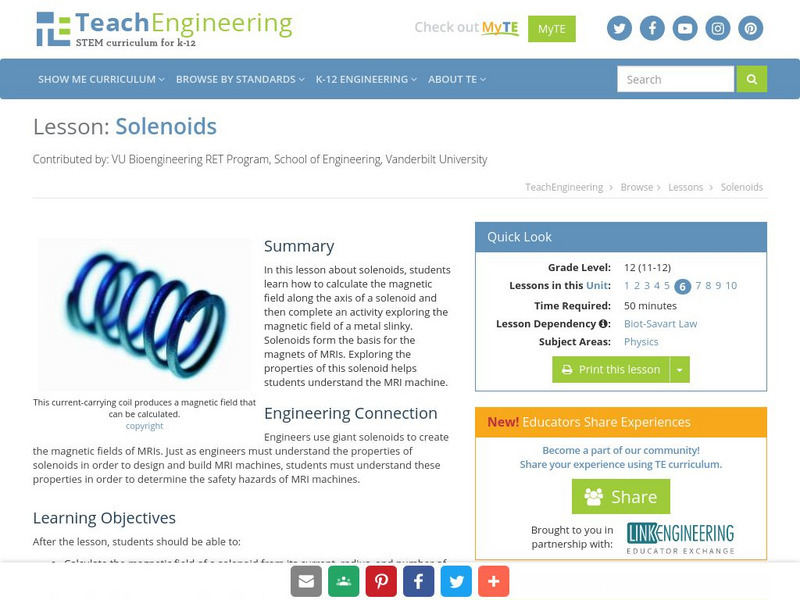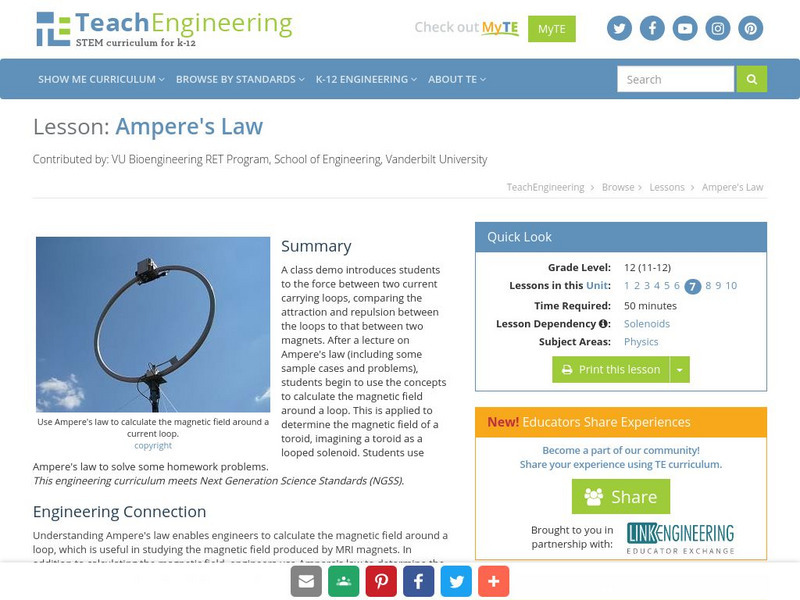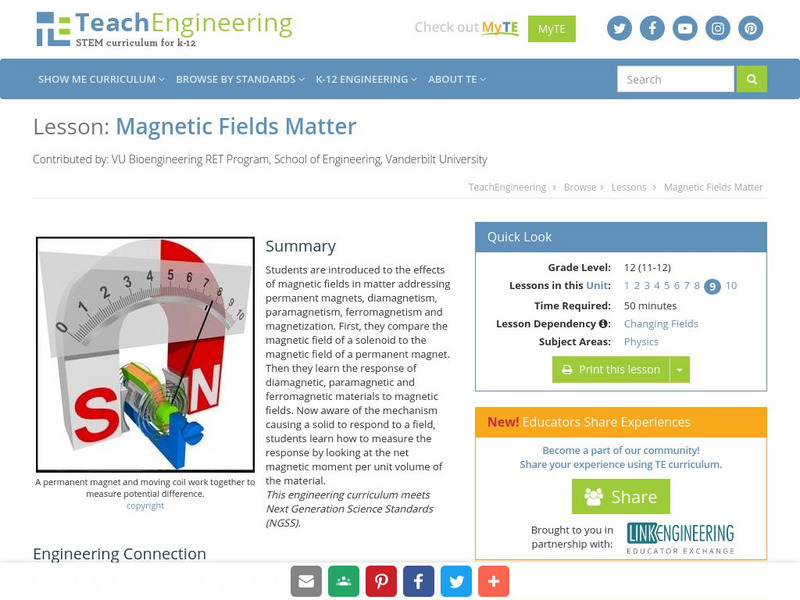Society for Science and the Public
Science News for Students: 3 D Printers Offer Better Way to Make Some Magnets
Oak Ridge National Laboratory in Tennessee has been working on a way to cut back expenses on powerful magnets used in various objects we use every day like computers and cars. Science News for Students probes into the investigation's...
University of Colorado
University of Colorado: Ph Et Interactive Simulations: Magnets and Electromagnets
Explore the interactions between a compass and bar magnet. Discover how to use a battery and wire to make a magnet.
Other
Mineralogical Society of America: Mineral Identification Key: Mineral Properties
Scientists classify minerals based on a set of physical properties. Each of these properties is described in detail.
University of Minnesota
University of Minnesota: Ships: Science & Religion of Michael Faraday
Here's a whole different look at Faraday. His religion, Sandemanian, greatly influenced both his life and his science. This article looks deeply at that aspect of his life.
Canada Science and Technology Museum
Canada Science and Technology Museum: Background Information for Electricity
The Canada Science and Technology Museum answers some of the most common questions about electricity. For example, get the definition of electricity, the difference between alternating and direct currents, and learn how a fuse works.
New York Times
New York Times: Crossword Puzzle: Electricity & Magnetism
The New York Times Learning Network has developed interactive & printable crossword puzzles. The theme of this puzzle is magnetism and electricity. Requires Java.
Other
Math, Physics and Engineering Applets
Written by Paul Falstad, these educational Java applets address myriad concepts related to electrostatics, magnetostatics and electrodynamics. You'll find instructions on how to operate each applet, but little explanatory material.
Georgia Department of Education
Ga Virtual Learning: Magnetism
In this interactive unit students will see how magnets work and how they are used in some of the most useful and common devices today.
Washington State University
Washington State University: Ask Dr. Universe: How Are Magnets Made?
Website addresses curious questions about science in a letter format. Here, Dr. Universe is asked about magnets and how they are made and he attempts to explain in an easy to understand answer.
TeachEngineering
Teach Engineering: Magic Magnetic Fluid
Students are introduced to a unique fluid--ferrofluids--the shape of which can be influenced by magnetic fields. This activity supplements traditional magnetism activities and offers comparisons between large-scale materials and...
TeachEngineering
Teach Engineering: Whose Field Line Is It, Anyway?
Students teams each use a bar magnet, sheet of paper and iron shavings to reveal the field lines as they travel around a magnet. They repeat the activity with an electromagnet made by wrapping thin wire around a nail and connecting...
TeachEngineering
Teach Engineering: The Good, the Bad and the Electromagnet
Using plastic straws, wire, batteries and iron nails, student teams build and test two versions of electromagnets-one with and one without an iron nail at its core. They test each magnet's ability pick up loose staples, which reveals the...
TeachEngineering
Teach Engineering: Force on a Current Carrying Wire
Students use a simple set up consisting of a current carrying wire and a magnet to explore the forces which enable biomedical imaging. In doing so, students run a current through a wire and then hold magnets in various positions to...
TeachEngineering
Teach Engineering: Mri Safety Grand Challenge
This module was written for a first year accelerated or AP physics class. It is intended to provide hands on activities to teach end of the year electricity and magnetism topics including the magnetic force, magnetic moments and torque,...
TeachEngineering
Teach Engineering: The Electric and Magnetic Personalities of Mr. Maxwell
Students are briefly introduced to Maxwell's equations and their significance to phenomena associated with electricity and magnetism. Basic concepts such as current, electricity and field lines are covered and reinforced. Through...
TeachEngineering
Teach Engineering: Magnetic Materials
Learners begin working on the grand challenge of the unit by thinking about the nature of metals and quick, cost-effective means of separating different metals, especially steel. They arrive at the idea, with the help of input from...
TeachEngineering
Teach Engineering: Electricity and Magnetic Fields
The grand challenge for this legacy cycle unit is for students to design a way to help a recycler separate aluminum from steel scrap metal. In previous lessons, they have looked at how magnetism might be utilized. In this instructional...
TeachEngineering
Teach Engineering: May the Magnetic Force Be With You
This lesson begins with a demonstration of the deflection of an electron beam. Students then review their knowledge of the cross product and the right hand rule with sample problems. After which, students study the magnetic force on a...
TeachEngineering
Teach Engineering: Thrown for a Loop
In this lesson plan, students begin to focus on the torque associated with a current carrying loop in a magnetic field. Students are prompted with example problems and use diagrams to visualize the vector product. In addition, students...
TeachEngineering
Teach Engineering: Both Fields at Once?!
This lesson discusses the result of a charge being subject to both electric and magnetic fields at the same time. It covers the Hall effect, velocity selector, and the charge to mass ratio. Given several sample problems, students learn...
TeachEngineering
Teach Engineering: Solenoids
This lesson plan discusses solenoids. Young scholars learn how to calculate the magnetic field along the axis of a solenoid and complete an activity exploring the magnetic field of a metal slinky. Solenoids form the basis for the magnet...
TeachEngineering
Teach Engineering: Ampere's Law
The lesson begins with a demonstration introducing students to the force between two current carrying loops, comparing the attraction and repulsion between the loops to that between two magnets. After formal lecture on Ampere's law,...
TeachEngineering
Teach Engineering: Magnetic Fields Matter
This lesson introduces learners to the effects of magnetic fields in matter addressing permanent magnets, diamagnetism, paramagnetism, ferromagnetism, and magnetization. First students must compare the magnetic field of a solenoid to the...
TeachEngineering
Teach Engineering: Build an Electromagnet!
Students build electromagnets and experiment with ways to change their strength.







